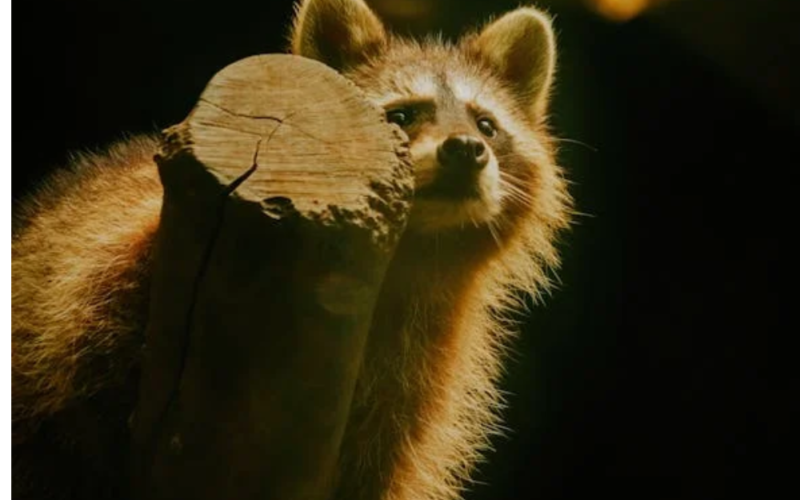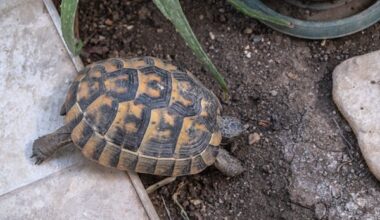So how high can raccoons jump? These furry creatures are known for their climbing skills, but their jumping abilities are even more impressive. Raccoons have special physical traits that let them jump higher than you might think. Let’s dive into the surprising facts about raccoon jumping and their athletic skills.
Unraveling the Raccoon’s Jumping Prowess
Raccoons aren’t known for their jumping skills. They have short legs and a sturdy body, making it hard for them to jump high or far. But they’re not just about jumping. They’re also great climbers and use their agility to overcome obstacles easily.
Raccoon Athletic Capabilities: Expectations vs Reality
Many think raccoons are super agile and can do amazing athletic feats. While they do have special traits that help them in different environments, their jumping skills are not as great as people think. Their raccoon jumping ability is actually quite limited. They’re better at raccoon climbing and raccoon acrobatic skills than at raccoon vertical leap.
Raccoon Vertical Leap: Exploring the Limits
Raccoons can jump up to 3 to 4 feet high, depending on their size and strength. But this is much less than what other small animals like squirrels or rabbits can do. Raccoons use their smarts and agility to get over obstacles and reach high places, not just their raccoon jumping ability. Raccoons may not jump high, but they’re very agile and adaptable. They can live in many different places.
By understanding their raccoon athletic capabilities, we see how they cleverly move through their world. Raccoons may not jump high, but they climb like pros. They have special physical traits that let them climb up walls and trees easily. Watching them climb can be amazing, as they move with grace and skill.

Unique Physical Adaptations
Their climbing skills come from their amazing body features. They have sharp claws and flexible feet that help them grip surfaces well. They can even turn their back feet around to go down headfirst. This flexibility, along with their strong body and light weight, makes them great climbers. They can climb really high without any trouble.
They also have sensitive paws that help them climb. These paws let them “feel” their way around, making climbing safer and more precise. There have been times when raccoons climbed really high, like a 25-story building in Minnesota. This showed how good they are at climbing. They can go over fences and up trees with ease.
How Far Can a Raccoon Jump?
Raccoons may not be known for jumping high, but they can cover a lot of ground. They are agile and can jump far, which helps them move through their world. This shows how well they can adapt to different situations.
Raccoons are great at climbing, swimming, and running, and they jump well too. They can jump vertically up to 4 feet and up to 5 feet horizontally from the ground. But the amazing part is they can jump up to 10 feet horizontally from a height. This shows how good they are at leaping.
There are many reasons why raccoons can jump so well. They are light, have strong legs, and have sharp claws for climbing. Even though they are heavier than cats, they can still jump safely. They know how to land safely, which helps them avoid getting hurt.

Raccoons are better at jumping off things than over them. They are great at climbing trees and getting over fences. They use their jumping skills to find food and shelter in the city. Knowing how far they can jump helps us see how clever they are.
Raccoons are known for their amazing ability to get over high fences and even climb up houses. They have a special way of tackling these challenges. This shows off their great agility and problem-solving skills.
Raccoons have nimble paws and a strong grip, making it easy for them to climb fences and house walls. They weigh between 10 and 20 pounds and can do incredible things. Their strong muscles and sharp claws let them go up vertical surfaces easily, making people wonder how they do it.
These animals are great at solving problems. They look at a situation, find good spots to grab or step on, and then climb up. Their skills let them go over tough parts like gutters and uneven walls with ease.
The way raccoons climb fences and houses shows how adaptable they are. By learning how they do it, we can understand their amazing resilience. This helps us see how they’ve adapted to live in cities and suburbs.
The Science Behind a Raccoon’s Falling Techniques
Raccoons are known for their agility and climbing skills. But they can still fall sometimes. Their amazing adaptations help them bounce back from falls. Let’s explore how raccoons manage to land safely from high up.
1. Aerial Righting Reflex: A Survival Instinct
When raccoons are in danger, like climbing a tall building or jumping between trees, they use an “aerial righting reflex.” This reflex helps them control their body and stabilize during a fall. It’s a survival skill they’ve developed over time, letting them adjust their bodies for a safe landing.
There are stories of raccoons doing incredible things.
For example, one in St. Paul, Minnesota, climbed 23 stories up a wall. Another in Ocean City, New Jersey, went nine stories up before jumping. These stories show how raccoons are amazing at surviving and being agile.
2. Raccoon Body Dynamics: Shaping a Safe Landing
Raccoons also have special body dynamics that help them land safely. Zoologist Sam Zeveloff was amazed by how raccoons can fall from so high without getting hurt. There’s no proof in the literature that raccoons can fall from such heights without getting hurt. Raccoons can land on their feet, just like cats.
They might be able to survive falls from as high as 40 meters without getting hurt. Their flexible limbs, quick movements, and good spatial awareness make them great at landing.
Raccoons can run up to 15 miles per hour, helping them escape from predators and get around after a fall. They also use different sounds like hisses, chatters, and purrs to communicate and stay safe.
3. Raccoon Physical Attributes: Defying Gravity
Raccoons are amazing creatures that seem to ignore gravity. They have flexible spines, agile limbs, and great muscle control. These traits help them move with incredible agility. Their flexible spine is key to their climbing and jumping skills. Raccoons can twist and turn in ways we can’t. This is because their spine moves more than most animals.
Raccoon spines are made up of 19 thoracic vertebrae, 7 lumbar vertebrae, and 23 caudal vertebrae (tail vertebrae). The discs between each vertebra can compress a lot. This lets raccoons twist, turn, and bend easily.
With their flexible spine and strong muscles, raccoons can fit into small spaces, climb up walls, and jump high.
Raccoons also have strong bones and muscles that help them move well. Their arms and legs are strong and precise. They can pick up objects with great skill. Their sharp senses and problem-solving abilities make them experts at overcoming gravity. Learning about raccoon anatomy shows us how they defy gravity. From their flexible spines to their strong limbs, raccoons prove nature’s creativity and adaptability.
Conclusion
Raccoons may not be top jumpers, but they have amazing skills and adaptations. They show off their raccoon acrobatic skills and bounce back from falls. These skills help them live in many different places. They might not jump far, but their raccoon acrobatic skills and climbing are amazing. They have strong claws, flexible ankles, and a long tail for balance.
This lets them climb trees, cross fences, and even get up a 25-story building. Raccoon jumping abilities are key to their survival. We learn how they overcome challenges and succeed. By understanding them, we can help both humans and raccoons live safely together.


